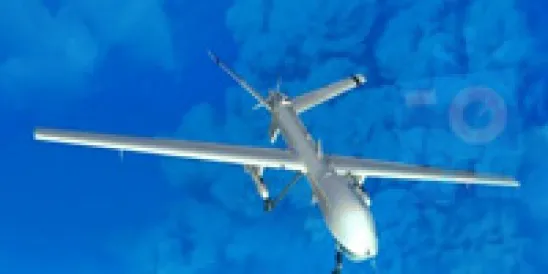On March 24, 2015, NextEra Energy became the latest energy company granted a Section 333 Exemption by the Federal Aviation Administration. NextEra Energy, whose subsidiaries Florida Power & Light and NextEra Energy Resources have a combined generating capacity of more than 42,000 MW and more than 70,000 miles of power lines, will be permitted to use small Unmanned Aircraft Systems (UAS) to perform visual inspections of energy infrastructure including transmission and distribution lines, power plants, and substations. While NextEra’s Section 333 Exemption includes conditions and limitations on small UAS operations similar to those included in Exemptions previously granted to other entities, NextEra’s Exemption is not limited to a specific location; rather, NextEra will be permitted to operate its small UASs throughout its footprint and primarily over property that is utility owned or controlled or that is utility right-of-wa
NextEra’s Section 333 Exemption came six months after its original Petition and one week after Pacific Gas and Electric (PG&E) joined the ranks of other electric utilities and energy and infrastructure companies that have petitioned the FAA for similar UAS operational authority. PG&E operates an extensive electric and natural gas utility system in northern and central California, and proposes to use small UASs to conduct inspections of its electric power transmission and distribution facilities, natural gas pipelines, power plants, and water storage facilities and conveyances associated with its hydroelectric operations. PG&E’s Petition for Exemption provides a good example of the potential benefits of UASs in the utility context where it explains that UASs will “reduce human, geologic, and asset-related hazards and safety risks, increase patrol frequency in difficult to reach locations that present substantial inspection-related hazards and safety risks, and will collect data using methods and sensors not presently available to current patrol methods, and with a proximity not available from other aerial and terrestrial vehicles or foot patrols.”
While the Section 333 Exemption process remains the only avenue for utilities and energy companies to gain experience with UASs while the proposed small UAS rules wend their way through the administrative process, the FAA is taking steps to make existing exemptions more useful to UAS operators. On March 23, 2015, the FAA announced an interim policy under which Section 333 Exemption holders will automatically receive a “blanket” Certificate of Waiver or Authorization (COA) permitting daytime small UAS flights at or below 200 feet, within visual line of sight of the pilot-operator, and outside certain distances from airports and heliports. The interim policy enables small UAS operations in permissible airspace throughout the country, whereas the prior policy required the UAS operator to obtain a COA for each designated location where UAS operations were intended. The interim policy is consistent with the Exemption granted to NextEra and will expand the permission granted to Commonwealth Edison in February, 2015. The broad COA will be incorporated into any future exemptions granted to other utilities, energy companies, and other UAS users.
These positive developments come amid mixed reactions to the FAA’s proposed small UAS rules. On March 24, 2015, the U.S. Senate’s Subcommittee on Aviation Operations, Safety, and Security held a hearing on safety, innovation, economic impacts, and privacy issues associated with UASs. The Subcommittee heard testimony on a variety of topics including the status of the FAA’s efforts to integrate UASs into the national airspace, the National Telecommunications and Information Administration’s investigation into best industry practices related to UAS privacy concerns, and the American Farm Bureau Federation’s overview of the value of UASs in precision agriculture.
The Senators also heard from Paul Misener, Vice President for Global Public Policy for Amazon.com. Mr. Misener described Amazon’s proposed Prime Air service that will deliver packages to customers within 30 minutes of a purchase as well as the company’s experiences with UAS research and development activities and regulatory oversight in other countries. Mr. Misener expressed concerns regarding the pace of developing UAS regulations in the United States and how such regulations are impeding the domestic development and deployment of this innovative technology. Mr. Misener noted that the Experimental Airworthiness Certificate granted on March 19, 2015 allowing Amazon to conduct limited outdoor UAS R&D and training activities in portions of Washington state has already “become obsolete” as a result of innovations occurring between the company’s application and the grant of the Certificate. Mr. Misener concluded with a call for more urgent action by Congress and the FAA on issues such as advanced UAS technologies, privacy, and uniform state, federal, and international UAS regulations.
It’s possible that aspects of Amazon’s call to action may be addressed in the near future as Senator Cory Booker (D-NJ) is reported to be set to introduce the “Commercial UAV Modernization Act” which would, among other things, create temporary rules to allow the broad commercial use of UASs while the current FAA rulemaking continues.
The events of the last two weeks indicate that industry and legislative interest in the potential of small UASs is continuing to grow and the regulatory environment is trying to respond and adapt. This bodes well for current and future UAS operations by utilities, energy companies, and various other industries.




 />i
/>i

